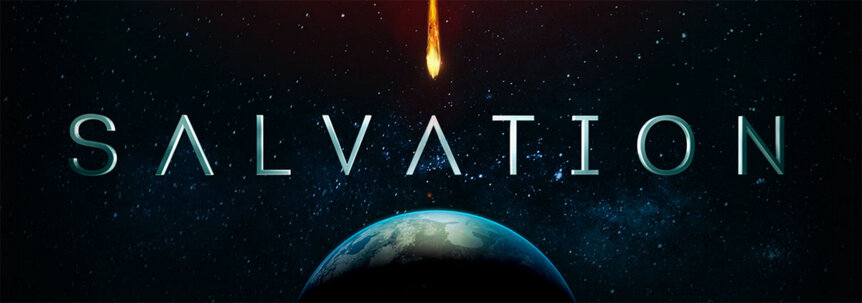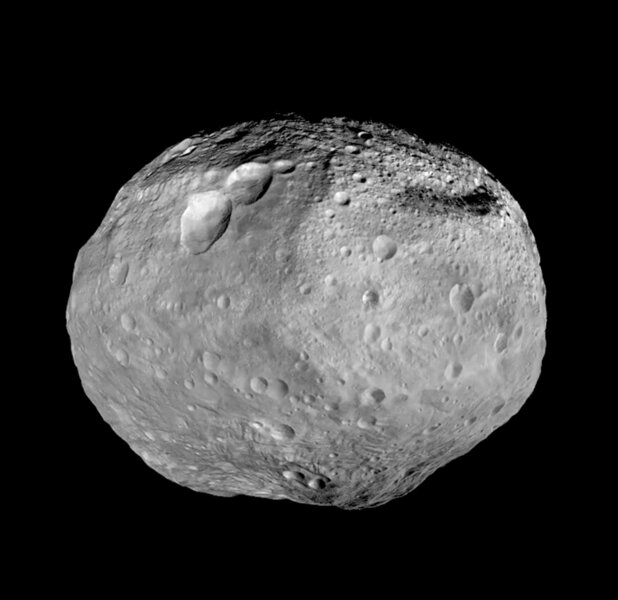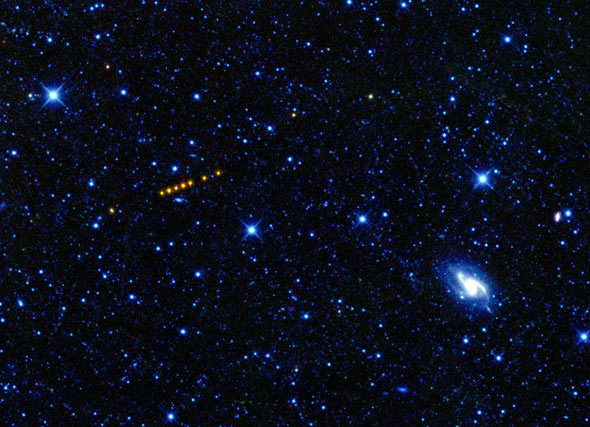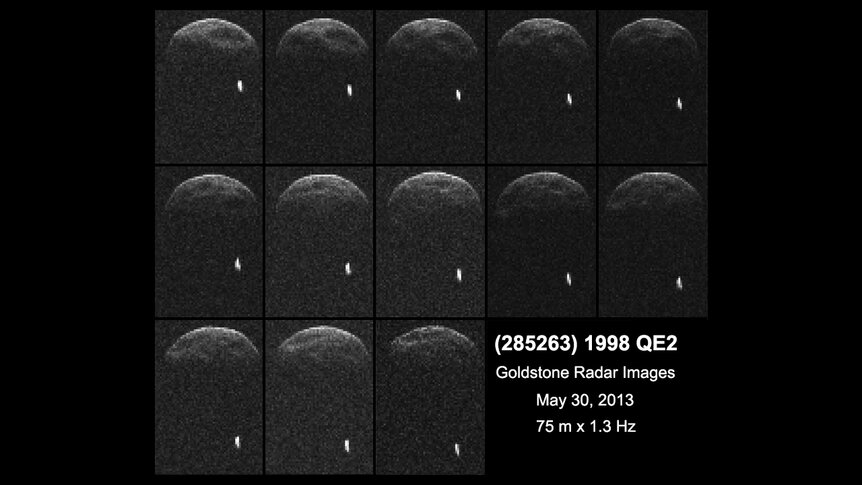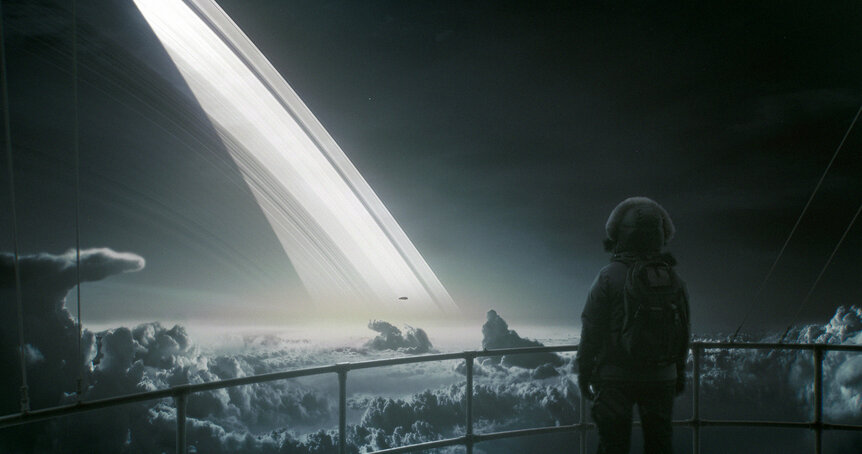Create a free profile to get unlimited access to exclusive videos, sweepstakes, and more!
Ten things you don’t know about asteroids (and impacts thereof)
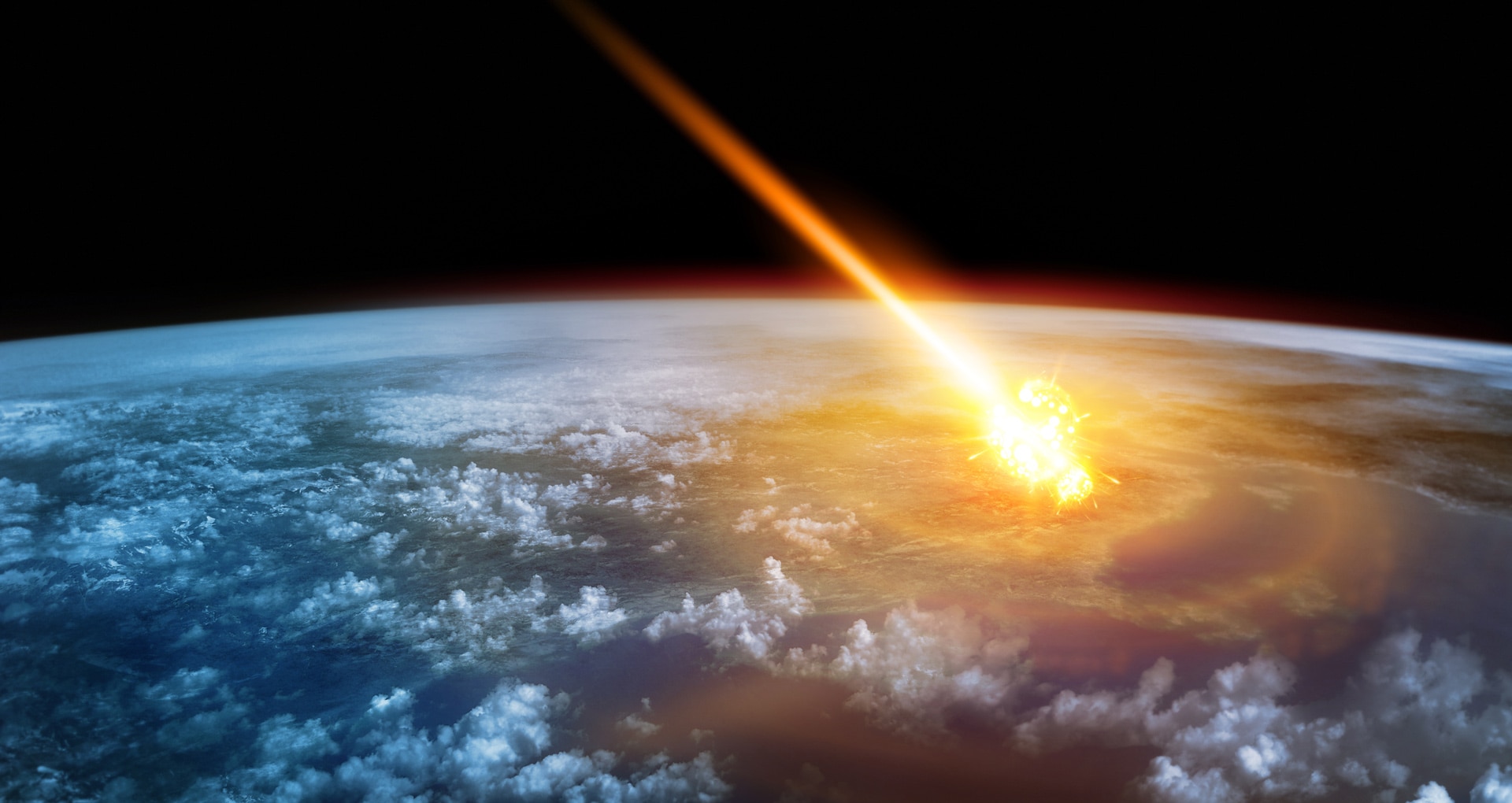
Tonight (Wednesday July 12, 2017 at 9/8 Central), the CBS television network premiers the first episode of a new series called Salvation. It’s a drama - part science fiction and part political thriller - about an asteroid discovered on a collision course with Earth. In the show, we have just six months before impact.
I am very pleased to let y’all know that I am the science consultant for the show! It’s my first big-time consultation (I’ve done quite a few before, but usually for one-offs, pilots that never get made, and oh, yeah, a big Hollywood movie where I literally changed one word in the script).
I’ve seen the first episode (you can watch the first 15 minutes here) and I have to say, it’s pretty good. Lots of intrigue and, while I won’t spoil anything, I will say that there are plenty of twists and turns to the plot as story unfolds. It’s been a lot of fun to come up with real (or near-real) solutions to some of the plot points the characters find themselves in. In some cases, I did as best I could to be as realistic and scientifically accurate as possible, but that’s not always the way it works out. As any science consultant will tell you, the story must come first! If the science needs to be bent a little bit to make that happen, well, you can’t be too stiff, or else you’ll break.
I’m OK with that, because without a story you’ve got nothing. Let science add what it can where it can, and don’t sweat it too much if you have to lean more on the fiction side of science fiction.
[Credit: CBS]
With that in mind, and in honor of the Salvation premiere, I thought it would be fun to make a short list of 10 facts, trivia, and misconceptions people have about asteroids and asteroid impacts. Some of these will tie directly into the show, so read this and keep it in mind when you watch the premiere tonight (at 9/8 Central, remember, and check your local listings). How did we do? Leave comments below! And for more info about the show, follow SalvationCBS on Twitter.
So:
Ten Things You (maybe) Don’t Know About Asteroids and Impacts Thereof.
1) Mostly, asteroids spend their time in the Main Belt. Mostly.
Asteroids are chunks of rock, metal, or a mixture of both. There’s no real lower limit to their size — it’s weird to call something the size of a basketball an “asteroid,” but there you go — and the biggest (Ceres and Vesta) are so large they’re called protoplanets.
The vast majority orbit the Sun between the orbits of Mars and Jupiter, far from Earth. But not all of them do. Some share Jupiter’s orbit, for example, and are called Trojan asteroids. Others have looping elliptical orbits, usually yanked into those paths by Jupiter’s mighty gravity.
[The main belt asteroid Vesta as seen by the Dawn spacecraft. Credit: NASA/JPL-Caltech/UCAL/MPS/DLR/IDA]
Others pass close to the Earth. We call those near-Earth asteroids, or NEAs, because sometimes astronomers lack imagination when it comes to etymological coinagement. They come in lots of different groups, generally classified by the semi-major axis of their orbit (the long diameter of an ellipse divided by two, analogous to a circle’s radius).
If the semi-major axis of an asteroid’s orbit is greater than Earth’s distance from the Sun, we call it an Apollo asteroid (named after the asteroid 1862 Apollo, the first of its kind to be found). If the semi-major axis is less than Earth’s distance to the Sun, it’s an Aten asteroid. There are also Amors (which have orbits that keep them at least just outside Earth’s orbit); Atiras (also called Apohele asteroids), which stay well inside Earth’s orbit; and some others. There may even be asteroids that stay inside Mercury’s orbit, called Vulcanoids, but they are currently theoretical; none has been seen.
Which brings us to …
2) An asteroid on an impact course may not come from deep space. It may be a neighbor that’s getting too friendly.
In 2004, an asteroid was discovered, later named Apophis. It was found to be an NEA, on an orbit just about 0.9 Earth years long. It’s an Aten with an orbit that crosses ours, and it was soon discovered that in the year 2029 it will pass so close to Earth it will be under our geosynchronous satellites! It’ll pass no less than 31,000 kilometers over our surface. A close call, but a clean miss.
But there’s more. During that encounter, Earth’s gravity will bend the orbit of Apophis. For a while it wasn’t clear how much. But it was quickly found that if it passed at exactly the right distance (going through a region of space astronomers call a “keyhole”), its orbit would change just enough that seven years later, in 2036, it would impact the Earth!
That caused a lot of concern, obviously. However, more recent observations show conclusively that it will miss the keyhole, and will therefore miss the Earth in 2036 by a substantial margin. Phew! But it was a wake-up call that not all asteroid threats come from far away, and that the keyhole is an important concept in asteroid science.
In Salvation, the asteroid comes from deep space. That’s not impossible, but there are other ones we need to keep our eyes on. But then, how do we find them? Well …
3) Asteroids aren’t usually discovered by people. They’re found in automated surveys.
It used to be that astronomers found asteroids literally by drawing maps by hand, then noting which “stars” moved (the name asteroid, after all, means “star-like”). The first, Ceres, was discovered that way!
Then we invented photography, and asteroids betrayed their existence by their motion around the Sun, leaving little streaks in the images.
Now, though, we have electronic detectors and telescopes that can see wide swaths of the sky. This means we can survey huge chunks of celestial real estate, looking for things that move— and that can be done using software that is much faster than humans.
The vast majority of asteroids are now found this way. The Wide-field Infrared Survey Explorer, or WISE, was a space telescope designed in part to look for asteroids, catching their warm glow in infrared. It found quite a few before the mission ended; it was so successful it was revived and renamed to NEOWISE, for Near-Earth Object WISE.
[WISE image of the asteroid Santa Claus. Yes, seriously. Credit: NASA/JPL-Caltech/UCLA]
New observatories are coming online now and in the near future that will find tremendous numbers of asteroids, too.
But how many are there? Well …
4) There are billions of asteroids. But the asteroid belt is actually pretty empty.
The main asteroid belt has over a million asteroids bigger than 1 km across, and there are likely more than a billion 100 meters across. Despite that, the main belt is mostly empty space! The total volume of asteroids is less than the Earth’s Moon, and there’s a huge amount of space out there, more than a quintillion square kilometers (and vastly more if you include the volume, not the area, of space available).
It’s also not clear how many NEAs there are. Well over 16,000 are known, and there are probably about 1000 a kilometer or more in size (statistics indicate we’ve found 90% of those already). There are probably a million NEAs bigger than about 40 meters in size out there. We’ve only discovered about 1% of them.
That sounds scary, but we’re looking for them! That’s the first step in preventing them hitting us, after all.
Speaking of which …
5) An asteroid doesn’t have to physically hit the ground to be a big problem.
Sure, you’ve seen movies where some gigantic asteroids slams into the Earth, creating devastation and all kinds of horribleness. But really big asteroids are very rare (the one in Salvation is big enough that very few like it exist). The smaller they are, the more common they are.
Really small ones just burn up in Earth’s atmosphere. We’re hit by about 100 tons of material every day, most smaller than a grain of sand! When that happens, we see a “shooting star,” or more technically a meteor.
If an asteroid is mostly metal, than it can get through the atmosphere and hit the ground hard enough to do real damage if it’s bigger than roughly 20 meters in size or so. The one that carved out Meteor Crater in Arizona was probably 30-50 meters across.
If it’s rock, then it’s more fragile and won’t hit the ground; it’ll disintegrate high up in the atmosphere. But that’s still a problem! Salvation opens (no spoilers) discussing the asteroid that blew up in the air over the Russian city of Chelyabinsk in 2013. That was a real event. The asteroid was rocky, and about 19 meters in diameter. Its power was tied to its kinetic energy, the energy of motion. That depends on the asteroid’s mass and its velocity (actually the velocity squared), and it was moving fast, about 20 kilometers per second. All that energy was released as the asteroid was stopped by Earth’s air, and the result was an explosion equivalent to 500,000 tons of TNT. That’s the same as a small atomic bomb.
That’s why astronomers are so intent on finding these things and preventing them from hitting us. But how do we do that … ?
6) Blowing up an asteroid is NOT the best way to prevent an impact. It may even be the worst.
In the movies, they usually try to blow up the asteroid, creating a cloud of zillions of little rocks that burn up harmlessly in the atmosphere.
But that’s a terrible idea. First of all, that doesn’t help. As I said, the kinetic energy of an asteroid (and thus its impact energy) depends on its mass and velocity. If you blow it up and all the pieces still hit, you haven’t changed the impact energy at all! You’ve just spread it around. For a really big asteroid that doesn’t help, and in fact could make things worse, creating damage over a larger area.
So you might think blowing it up is a better idea if the asteroid is still far away, letting it disperse. But nope. Explosions are hard to get right, and you might create several somewhat smaller pieces still on a collision course. Now you don’t have one problem, you have many. And if you use a nuke, now you have many radioactive problems.
A better idea is to try to nudge it into a path that misses the Earth. There are lots of ways of doing this. Perhaps the best is what’s called a gravity tractor, a small spacecraft that uses its tiny gravity to slowly tug an asteroid into a new orbit (you can find more technical detail here). But that takes a long time. If the clock is running out, you can simply slam a spacecraft into the asteroid, what’s called a kinetic impact, to try to change its velocity enough to miss, us as well (without breaking it up!). Most likely you’d need both a kinetic impactor and a gravity tug to make sure the asteroid misses.
There are lots of other techniques being discussed now. The problem is, none has been tested very well. That’s something I’d actually like to see NASA do, fund a series of missions to try different methods on asteroids to see what works best, and what we need to do to iron the kinks out.
By the way, the B612 Foundation is a group of astronomers, engineers and astronauts dedicated to characterizing the asteroid threat and doing something about it. Many other groups exist as well. Like I said, we take this threat seriously.
One thing we’ll need to know in advance is what the asteroid is made of. They can be full of surprises! For example …
7) Some asteroids are not much more than piles of rubble.
You probably think of asteroids as being monolithic, literally one big chunk of stuff. But we’ve learned that’s not always the case.
A rocky asteroid orbiting the Sun isn’t alone; there are lots of other asteroids out there. Over billions of years, a typical asteroid will suffer many impacts from those other rocks. If the collision is high-speed, and the intruder big enough, they can both shatter. But a small rock moving relatively slowly will hit the bigger one hard, but not hard enough to disrupt it. Instead, the impact can create cracks in the big one that can run very deep. After lots of such encounters, the asteroid can be so riddled with fissures it’s really nothing more than a pile of rubble held together by its own gravity (and other weak forces).
We’ve actually found several asteroids like this. It’s possible this structure would affect how we try to deflect it, and what happens should one hit Earth, so astronomers are very intently studying these weird objects.
Speaking of weird …
8) Most asteroids aren’t round. Some are shaped like bowling pins!
In movies, asteroids are usually depicted as round. Lots of them are! Especially if they’re big; their gravity can be strong enough to shape them into a sphere. Think of it this way: Imagine a mountain on Earth. If it gets too big the rock inside it isn’t strong enough to support it against gravity, so it collapses. It smooths out. Now imagine a million mountains all over the Earth like that: They all collapse, flattening out. The overall shape that would form is a sphere.
But most asteroids are way too small for their gravity to be strong enough to do that. So they come in all kinds of shapes. Many we’ve seen up close are elongated, like potatoes. Some are even shaped like bowling pins, or like cartoon dog bones! Those may be formed when two small asteroids impact at slow enough speed that they stick together. It’s also possible that over time, various forces can spin an asteroid up, making it rotate faster and faster, until it breaks apart. Then the pieces can reform, creating a dumbbell shape. We see that in many of the comets we’ve visited with spacecraft; comets and asteroids are very similar.
There are other things that can result from this breakup, too. For example …
9) Many asteroids have moons.
Some asteroids have come close enough to Earth recently that astronomers have pinged them with radar. Using sophisticated techniques they can learn a lot about them that way, including their size, how fast they spin and whether they’re alone.
Yup: Just like planets, asteroids can have moons! In fact, something like 16% of NEAs larger than about 200 meters across have small companions. They may form when a bigger asteroid spins up and breaks apart, or undergoes a smallish impact that sends debris into space around it.
[The asteroid 1998 QE2 imaged by radar shows the motion of its small moon. Credit: NASA/JPL-Caltech/GSSR]
An asteroid with a moon provides incredibly useful information: By measuring how long it takes the moon to orbit, the mass of the big asteroid can be found (because the gravity of the asteroid depends on its mass, and it’s that gravity that controls the orbit of the moon). That’s nearly impossible to determine otherwise. That’s one way we know that many asteroids are rubble piles; they have way too little mass for a solid rock their size. They’re full of holes!
But that’s not all they’re full of. In fact …
10) Asteroids are a threat. But they can also be our … salvation.
We almost always hear about asteroids in terms of how harmful they are if they impact Earth. But they’re not all doom and gloom!
Many asteroids have water ice inside them. We’ve detected it in several, and it’s possible quite a few have ice and other useful substances in them.
Useful? Yup. Humans need water to survive, of course, but you can also use electricity (supplied by solar panels, say) to break water molecules up into oxygen and hydrogen. Oxygen is rather useful for breathing, and hydrogen is great as a fuel. So, right there, you have three critical components to inhabiting space!
Scientists are very interested on figuring out whether we can harvest asteroids for materials. If you can mine them and store those materials, they can become space depots, floating way stations for astronauts exploring deep space. Water is very heavy, so launching it into space is difficult and expensive. If it’s already there, you can save a huge amount of effort and money.
They also have metals in them that are useful for building spaceships and structures, too. They could very well be one-stop shopping places for future astronauts. Some private companies have even been started in the hopes of doing this!
I love this idea. It makes space travel far easier, and can provide humanity with the tools and raw materials needed not only to explore space, but to stay there.
If we do nothing, eventually a large enough asteroid will hit us, and could do a lot of damage, destroying a city, collapsing our civilization, or even causing our extinction.
[Someday, some human will have this view. Credit: Erik Wernquist, from his magnificent short film "Wanderers".]
By learning how to divert asteroids we can prevent this from happening. By tapping into asteroids as a resource we can simultaneously ensure humanity won’t get wiped out by any single cause. If we become a true spacefaring race our future will be long indeed, and will include seeing us setting foot on other planets, hopefully to live there. Permanently.
Extinction, or salvation? The choice is ours.
[Top image credit: Shuttertstock / solarseven]
